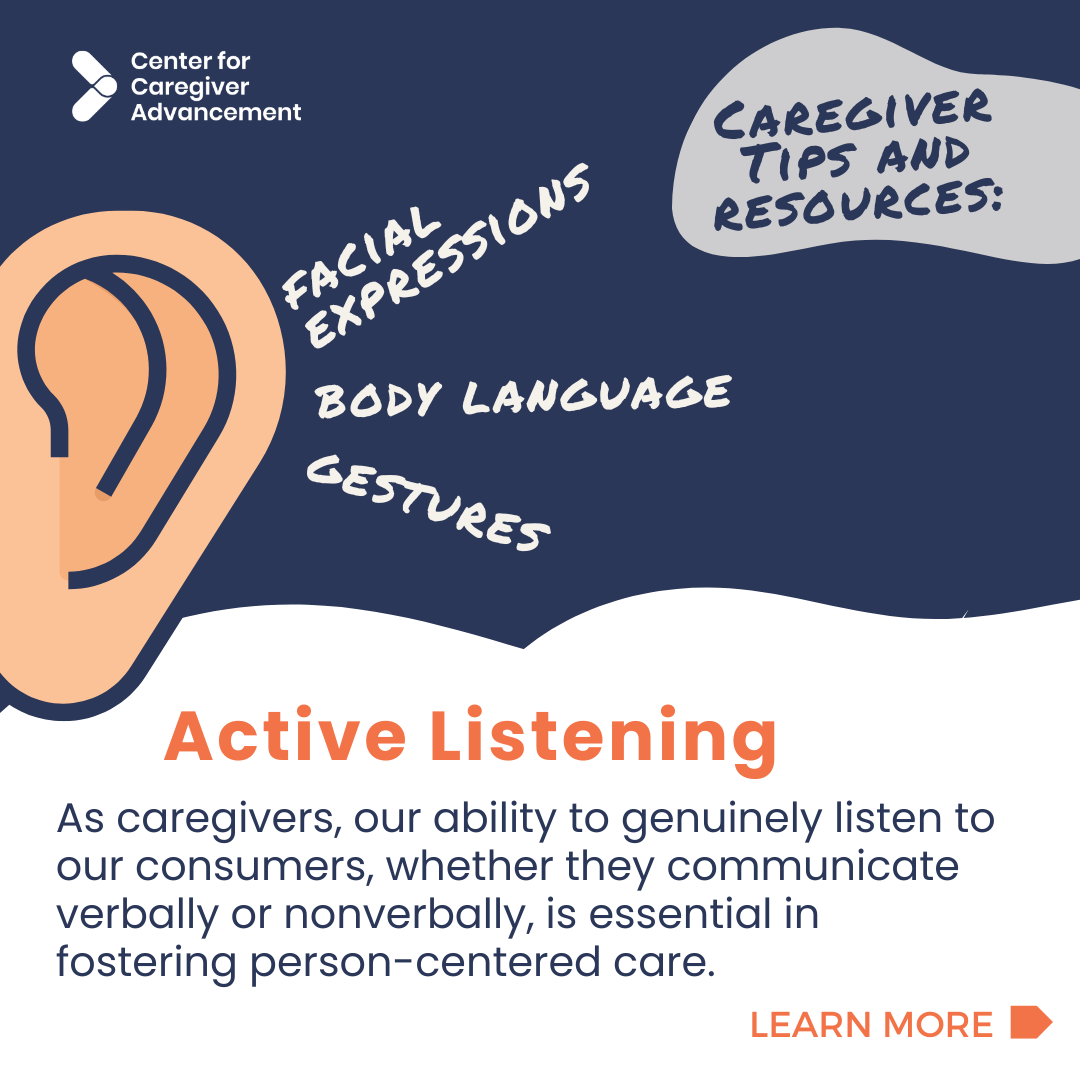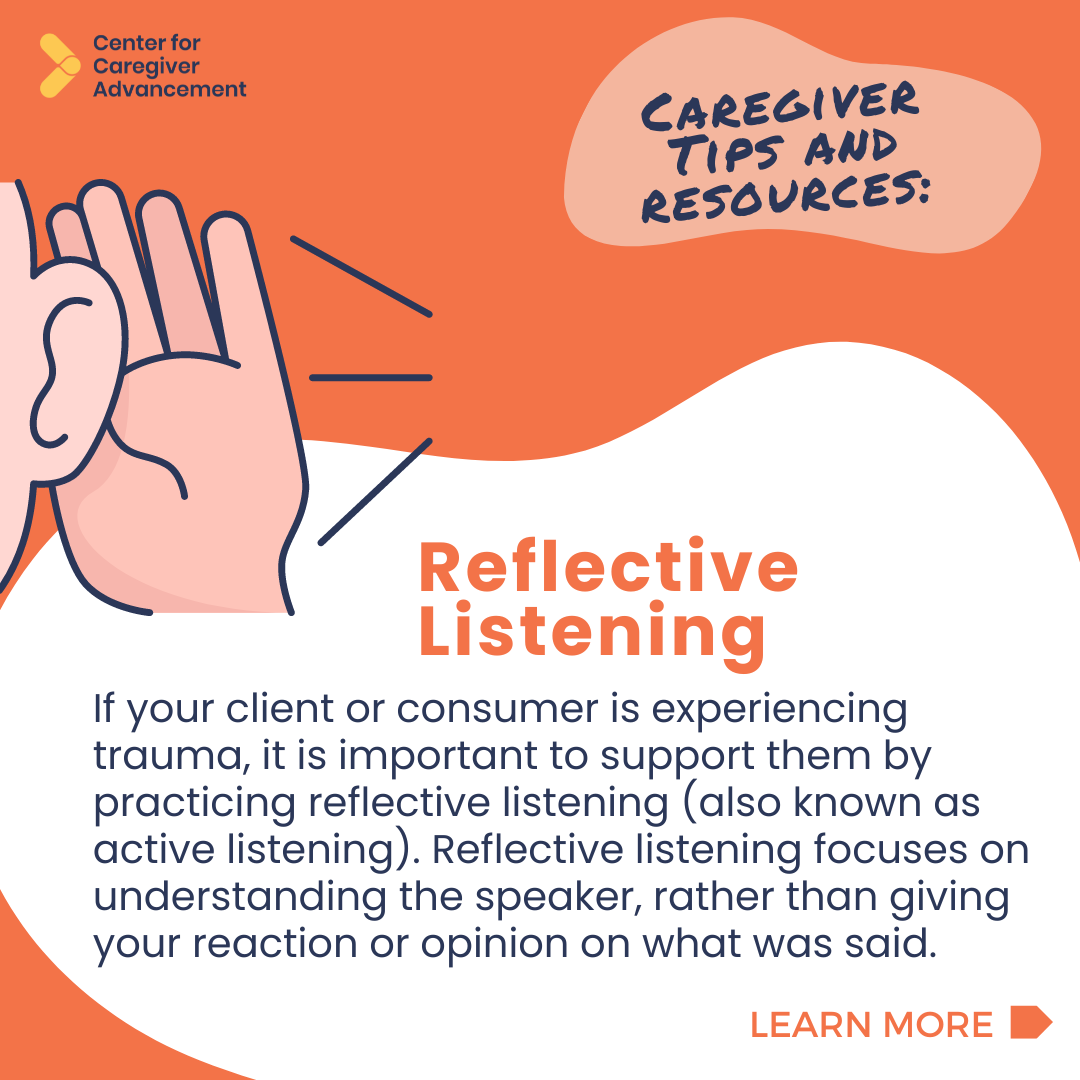If your client or consumer is experiencing trauma, it is important to support them by practicing reflective listening (also known as active listening). Reflective listening focuses on understanding the speaker, rather than giving your reaction or opinion on what was said. This communication strategy involves two key steps:
- Seeking to understand a speaker’s idea
- Offering the idea back to the speaker to confirm the idea has been understood correctly by you
This helps caregivers provide support to the consumers in their care when they are experiencing trauma. Active listening can be particularly helpful in emergencies. It focuses on the meaning and emotions behind the speaker’s words, to ensure the speaker feels listened to and understood. This listening technique has numerous observable benefits such as the following:
- It prevents miscommunication and wrong assumptions
- It makes people feel they are being heard and understood
- It encourages people to hear and reflect on their own statements
- It builds and deepens the conversation

How Can You Practice Reflective Listening?
A key component of this communication technique is where the listener restates and reflects back the speaker’s message. By restating the speaker’s message, the listener confirms understanding and helps to ensure that the speaker feels heard.
It’s a more focused form of active listening. It goes beyond simply acknowledging the speaker. It is a way to actively validate their message.
To accurately practice reflective listening, it is also imperative to avoid the following:
- Asking a series of questions to get information from someone
- Giving unsolicited advice
- Minimizing the person’s concern




